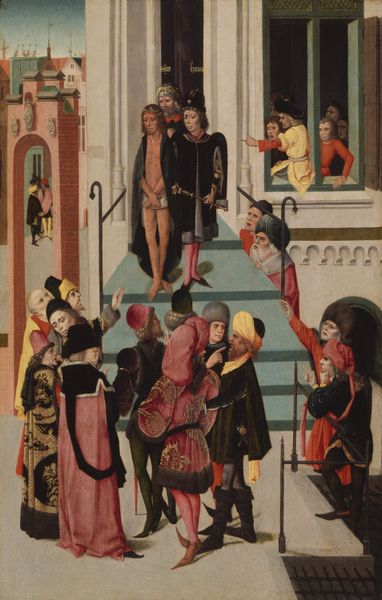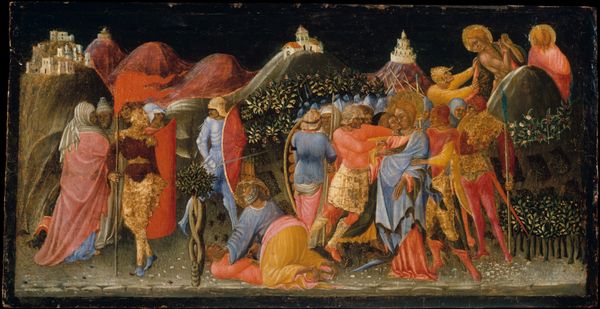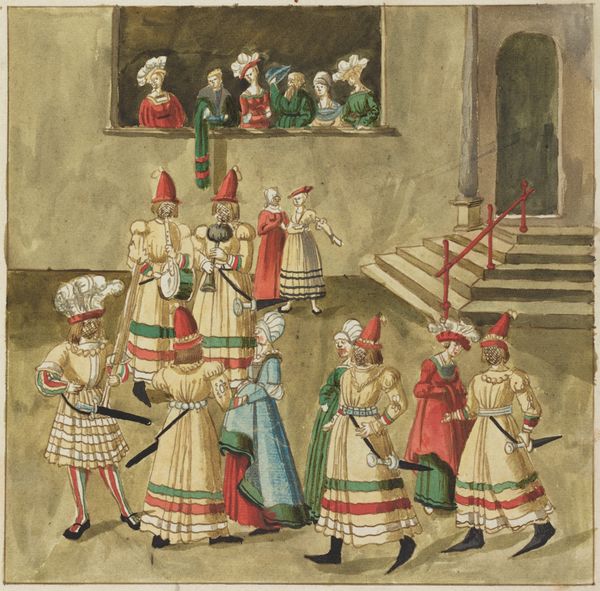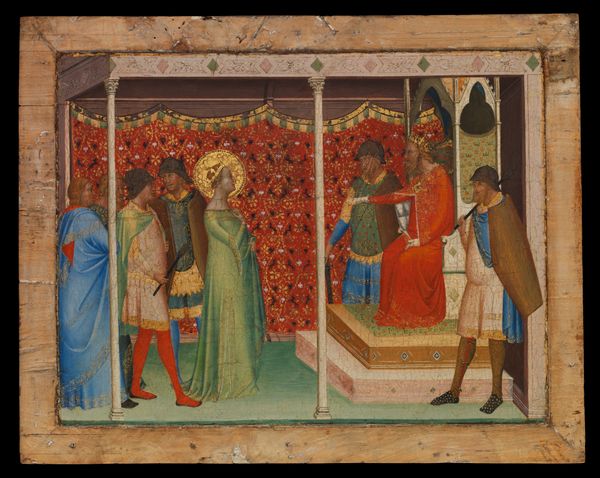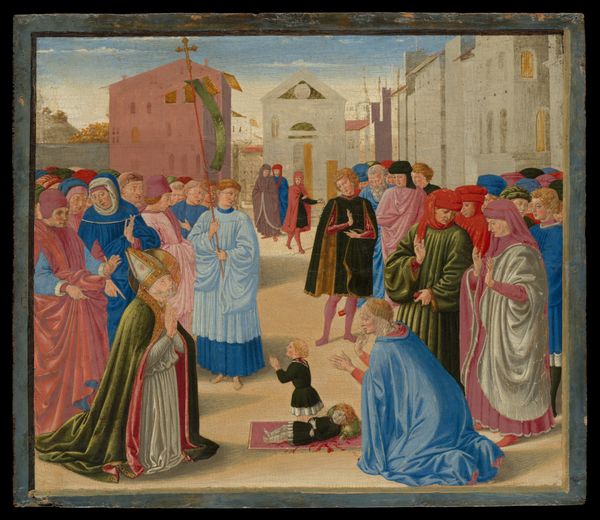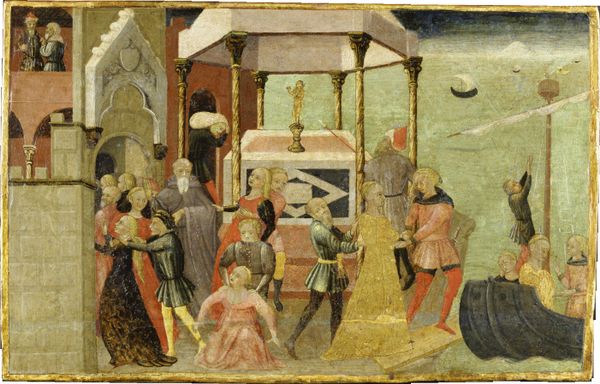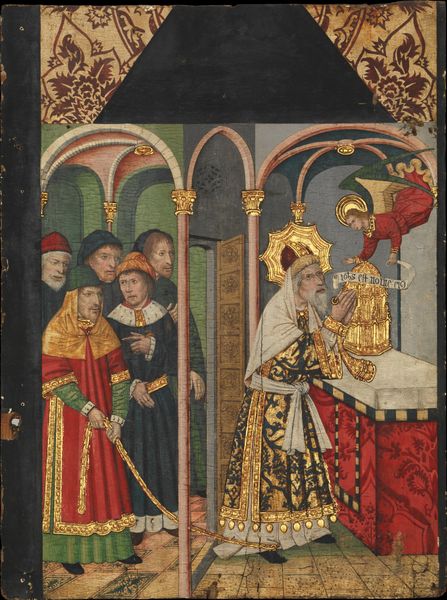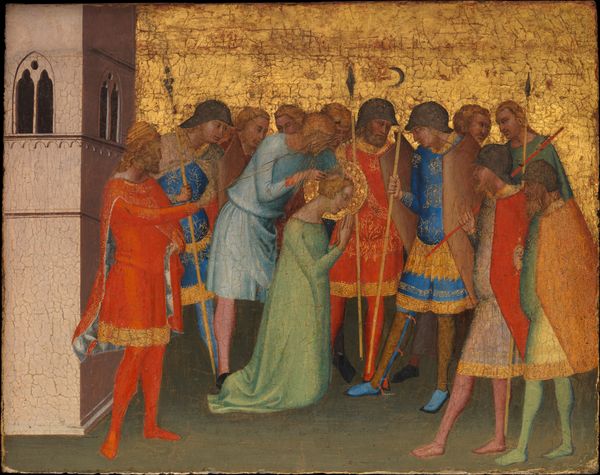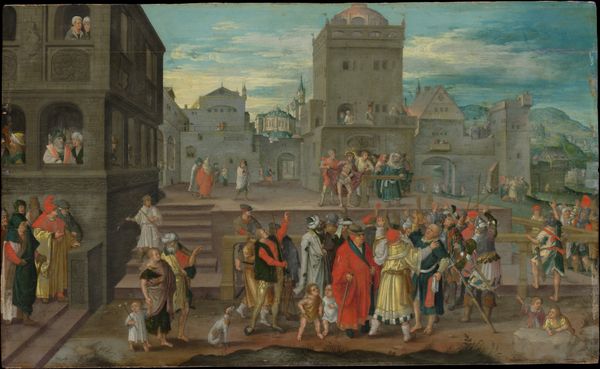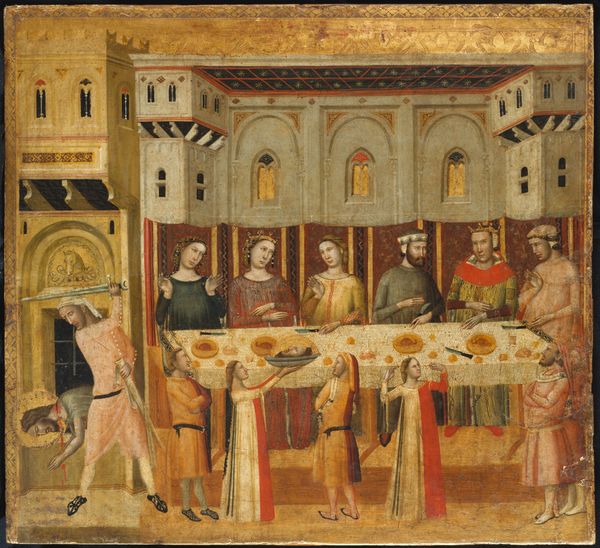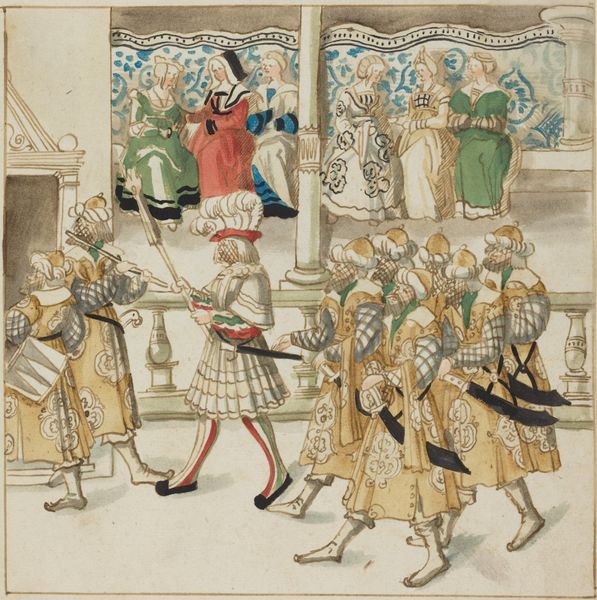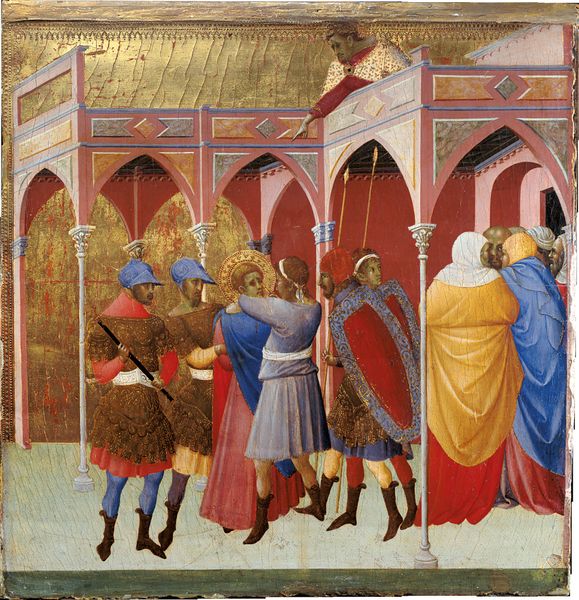
painting, oil-paint
#
narrative-art
#
painting
#
oil-paint
#
figuration
#
oil painting
#
genre-painting
#
history-painting
#
italian-renaissance
#
early-renaissance
Dimensions: 17 1/2 x 55 3/8 in. (44.5 x 140.7 cm)
Copyright: Public Domain
Curator: Look at this fascinating panel painting, "The Story of Esther," created by Marco del Buono Giamberti sometime between 1422 and 1489. It’s currently housed here at the Metropolitan Museum of Art. Editor: My first impression is that of two separate dramas unfolding. The procession to the left feels so distinct from the regal gathering on the right, even with the unifying architectural elements. Curator: Indeed. The composition is strikingly divided, presenting two distinct, yet interconnected scenes from the biblical Book of Esther. Observe how the artist uses perspective and architecture to delineate the outdoor and indoor settings. Notice the use of gold leaf—remarkably lavish and prevalent for that time. Editor: It is visually striking—almost oppressively gilded—but also consider what the Book of Esther tells us. The story of a Jewish woman chosen as queen who bravely subverts a genocidal plot is profoundly relevant in understanding intersectional identity today. Esther leverages her power—achieved by luck, but employed through incredible self-possession—to save her people from destruction. Curator: Yes, one can certainly read those layers into it. Formally speaking, the deliberate arrangement of figures, their gestures, and the play of light and shadow—particularly the stark contrasts—invite contemplation about narrative, power, and pictorial space in Early Renaissance art. Editor: But we mustn’t overlook the politics inherent to representing biblical narratives during this era. Who commissioned it? What sociopolitical messages are subtly being embedded or emphasized? While the mastery of form is evident, acknowledging its deeper context empowers us to become better critical viewers. The abundant use of precious materials in the picture reinforces and mirrors the idea of status, while women generally remained disenfranchised in Early Renaissance Florence. Curator: Certainly, examining those threads adds valuable dimensions. What impresses me about the technique is its meticulous precision. The figures, architecture—every minute detail serves to construct this self-contained, albeit fragmented, narrative world. It represents an innovative example of visual storytelling within the Early Renaissance. Editor: And let's carry these kinds of discussions outward, as they pertain not just to artwork but also systems of power at work around the world today. The history within this painting has much to tell. Curator: Precisely. This deep dive reminds us how studying visual structures helps clarify both an artwork's power and limits.
Comments
No comments
Be the first to comment and join the conversation on the ultimate creative platform.
